Hawks, renowned for their majestic flight and predatory nature, possess a visual prowess that sets them apart in the avian world.
With their keen eyesight, hawks can spot their prey from great distances and accurately assess their surroundings with remarkable precision.
The question of “How good is a hawk’s vision?” unveils a fascinating exploration into the intricate mechanisms behind their exceptional visual abilities.
This article aims to delve into the characteristics of hawks and emphasize the paramount importance of vision in their hunting strategies and overall survival.
By understanding the anatomical adaptations, visual acuity, colour perception, motion detection, and binocular vision of hawks, we gain insight into the extraordinary capabilities of these avian predators.
Furthermore, this investigation sheds light on the comparative analysis of hawk’s vision with other birds of prey while highlighting potential applications and research avenues for studying their visual prowess.
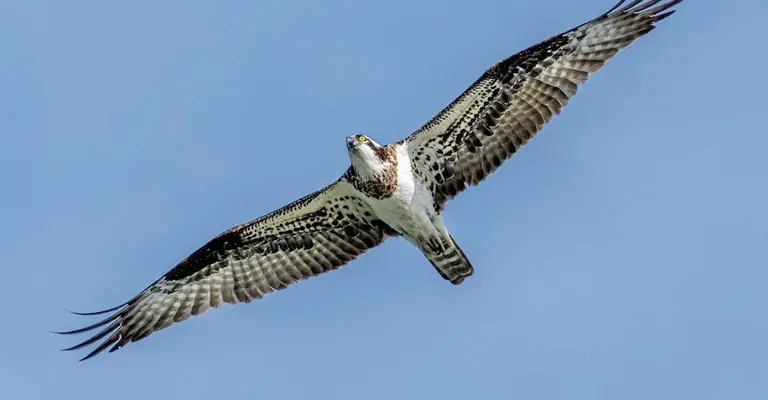
How Good Is A Hawk’s Vision?
Hawks are birds of prey that have remarkable eyesight. They can see far-away objects with outstanding clarity and accuracy. They can also perceive colours and movements better than most other animals.
How do they achieve this feat? What are the anatomical and physiological adaptations that make their vision so superior? This article will explore the answers to these questions and more.
Vision is one of the most important senses for animals, especially those that hunt or avoid predators. Different animals have different eyes and visual systems that suit their ecological needs and lifestyles.
Hawks are among the animals that have evolved some of the most impressive visual abilities in the animal kingdom. They use their vision to locate, track and capture their prey, often from great heights and distances.
Hawks have several features that make their vision exceptional. Some of these are:
Large Eyes
Hawks have relatively large eyes for their body size, which allows them to gather more light and form larger images on their retinas. Their eyes are also fixed in their sockets, so they cannot move them independently like humans.
Instead, they have to move their whole head to change their gaze direction. This gives them more stability and focus when flying or diving at high speeds.
Two Foveae
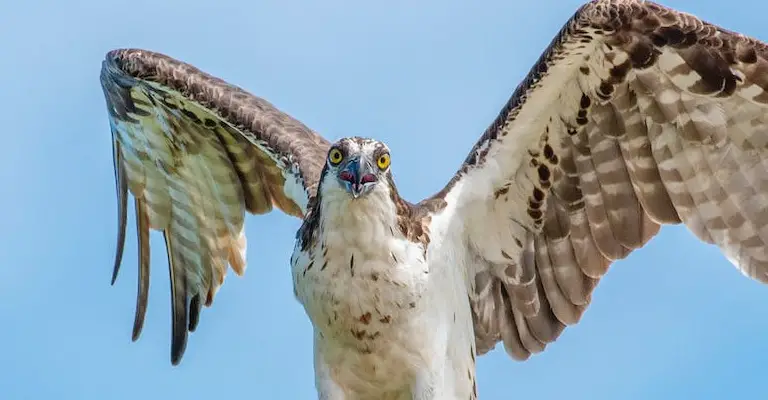
The fovea is part of the retina with the highest concentration of photoreceptors, which are the cells that detect light and colour.
Humans have one fovea in each eye, responsible for our central vision and sharpness. Hawks have two foveae in each eye: one primary and one peripheral.
The central fovea gives them high visual insight, which is seeing fine details and resolving small objects. The peripheral fovea gives them a wide field of view, which is the ability to see a large area of the surroundings. This helps them to scan the horizon for potential prey or threats.
Four Types Of Cones
Cones are photoreceptors that enable colour vision. Humans have three types of cones: red, green and blue, which correspond to the primary colours of light. Hawks have four types of cones: red, green, blue and ultraviolet (UV). The UV cone allows them to see beyond the visible light spectrum that humans can perceive. This gives them an advantage in detecting prey that may be camouflaged or hidden by vegetation or snow.
High Visual Acuity
How well an animal can see a particular object at a certain distance is measured. It is often expressed as a fraction, such as 20/20, for humans with normal vision. This means that a human can see an object 20 feet away as clearly as if it were 20 feet away.
Hawks have much higher visual acuity than humans: about 20/4 or 20/5. This means that they can see an object 100 feet away as clearly as if it were 20 feet away. This allows them to spot prey from several kilometres away.
Hawks have extraordinary vision surpassing most other animals, including humans. They have large eyes, two foveae, four types of cones, and high visual acuity, enabling them to see far-away objects with outstanding clarity and accuracy.
They can also perceive colours and movements better than most other animals. These adaptations help them to hunt successfully and survive in their natural habitats.
Motion Detection of Hawk
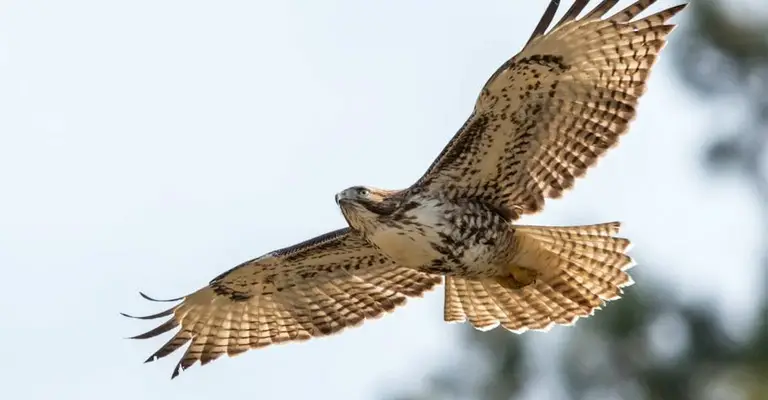
Motion detection is critical to an animal’s survival and hunting abilities. Among the creatures that excel in this area is the hawk, which possesses superior motion detection abilities.
Understanding the role of motion detection in hunting and survival sheds light on the remarkable capabilities of these birds.
Hawk’s Superior Motion Detection Abilities:
Hawks have highly developed visual systems enabling them to detect motion exceptionally. Their eyes have a high concentration of specialized cells called photoreceptors, allowing them to perceive even the slightest movement.
This heightened sensitivity to motion grants hawks a significant advantage when hunting.
Role Of Motion Detection In Hunting And Survival:
Detecting Prey In Motion
Motion detection is crucial for hawks to spot their prey while in flight. Their ability to quickly identify the slightest movements, such as a small mammal scurrying through the grass or a fish swimming in the water, helps them pinpoint potential targets accurately.
This acute sense of motion detection allows hawks to locate and capture their prey efficiently.
Monitoring The Environment For Potential Threats
Motion detection also plays a vital role in the survival of hawks. By continuously monitoring their surroundings for movement, hawks can detect potential threats, such as predators or approaching dangers.
This heightened awareness allows them to respond quickly and take evasive actions to ensure safety.
Visual Field And Binocular Vision
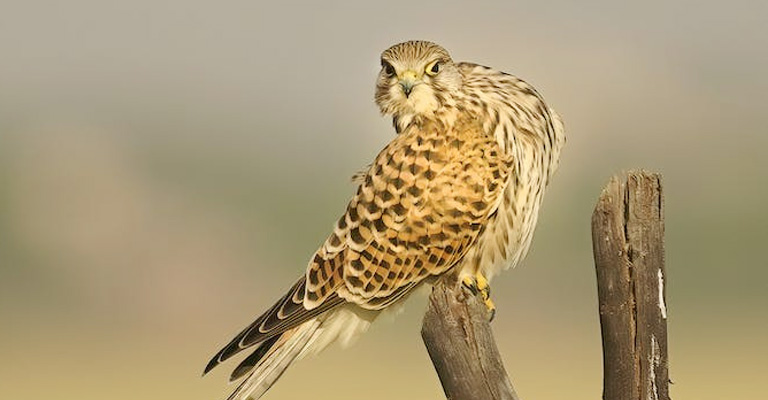
Hawks possess remarkable visual capabilities, including a wide visual field and binocular vision. These adaptations enable them to excel in hunting and survive in their natural habitats.
The wide visual field of hawks allows them to quickly scan a large area and detect potential prey or threats.
Hawk’s Wide Visual Field
Hawks have excellent peripheral vision due to their large, forward-facing eyes on the sides of their head. This arrangement grants them an expansive visual field spanning approximately 270 degrees or more.
Such a wide field of view enables hawks to monitor their surroundings effectively. It increases their chances of spotting prey from various angles.
Benefits Of Binocular Vision In Hawks:
Depth Perception
Binocular vision, which occurs when both eyes focus on the same object, grants hawks exceptional depth perception. By perceiving the slight differences in the images each eye receives, hawks can accurately judge the distances between objects in their environment.
This depth perception is crucial for precise targeting and successful hunting.
Accurate Judgment Of Distance And Speed:
Binocular vision also allows hawks to assess the speed and distance of moving objects accurately. By comparing the disparities in visual information from both eyes, they can estimate the velocity and trajectory of their prey.
This ability enables hawks to execute swift and precise aerial manoeuvres, ensuring their hunting endeavours are efficient and effective.
Visual Adaptations For Hunting
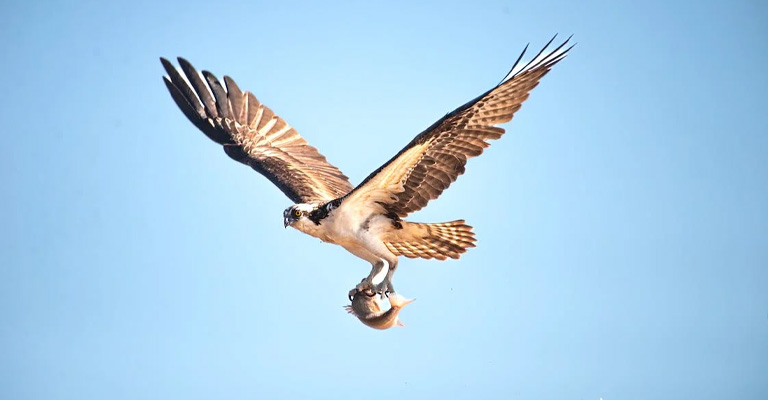
Hawks possess remarkable visual adaptations that enhance their hunting abilities. Their unique vision allows them to perceive ultraviolet (UV) light and excel in low-light conditions, enabling them to track prey effectively.
Hawk’s Ability To See Ultraviolet Light:
Hawks have specialized photoreceptor cells in their eyes that can detect UV light, which is invisible to humans. This ability plays a crucial role in hunting as it allows them to spot critical visual cues, such as UV reflections on objects, which aids in locating prey.
Utilization Of Uv Light In Hunting
By perceiving UV light, hawks can spot invisible patterns and markings to the human eye. This enables them to identify potential prey, such as small mammals or birds, by distinguishing UV-reflective features that stand out against their surroundings.
Tracking Prey Through Uv Reflections
When prey animals move, they leave UV reflections on various surfaces, including foliage, feathers, and trails. Hawks can utilize these UV reflections as visual trails to track their quarry, providing valuable information about the prey’s movement patterns and increasing their chances of a successful hunt.
Hawk’s Vision In Low-Light Conditions:
Hawks possess adaptations that enhance their vision in low-light environments, allowing them to hunt effectively during dusk, dawn, and even at night.
Adaptations For Nocturnal Hunting
To hunt in low-light conditions, hawks have larger pupils than diurnal birds of prey, allowing more light to enter their eyes. Additionally, they possess a higher density of rod cells in their retinas, responsible for vision in dim light.
These adaptations enable hawks to take advantage of the reduced competition for prey during the nighttime hours.
Frequently Asked Questions:
While hawks do not possess true night vision, they have excellent vision in low-light conditions. Their large eyes and high density of photoreceptor cells help them gather available light, giving them an advantage during dawn, dusk, and overcast conditions.
Hawks have an extraordinary visual range, with some species capable of spotting prey from over a mile away. Their exceptional visual acuity and keen eyesight enable them to detect movement and pinpoint targets in the distance.
Yes, hawks have colour vision and can perceive a broader range of colours than humans. Their eyes have four types of cone cells, allowing them to differentiate between various hues and shades.
Hawks have swift reaction times when it comes to capturing prey. Their sharp eyesight and aerial agility enable them to respond swiftly to movements, allowing them to launch precise and lightning-fast attacks.
Hawks and eagles both have exceptional visions tailored to their specific hunting strategies. While hawks are known for their acute vision and manoeuvrability, eagles are renowned for their long-distance vision and the ability to spot prey from great heights.
Conclusion
The visual prowess of Hawks is genuinely extraordinary. Their large eyes, high density of photoreceptors, and remarkable adaptations allow them to see the world with unmatched clarity and precision. Hawk vision is instrumental in their hunting strategies and overall survival.
It enables them to spot prey from great distances, accurately judge depth and length, and distinguish fine details and movements.
The exceptional visual acuity of hawks is a testament to the wonders of nature’s evolutionary ingenuity. It inspires us to appreciate the diverse and remarkable adaptations found in the animal kingdom.